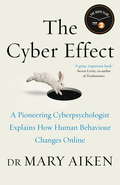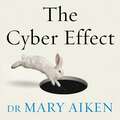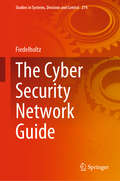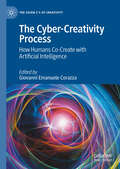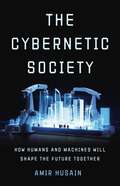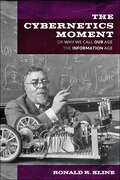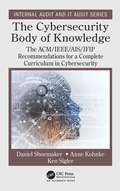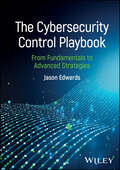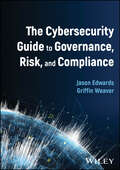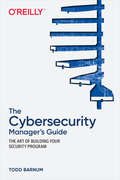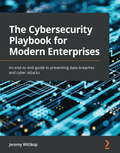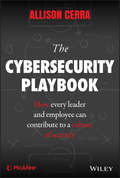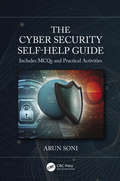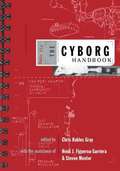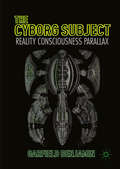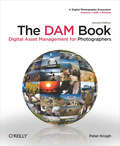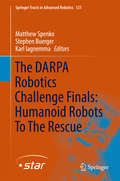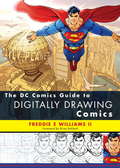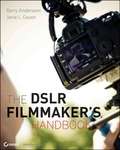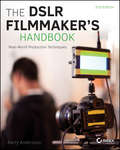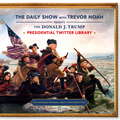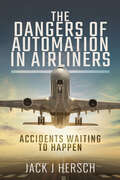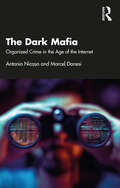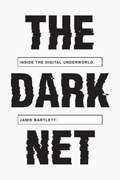- Table View
- List View
The Cyber Effect: A Pioneering Cyberpsychologist Explains How Human Behaviour Changes Online
by Mary AikenDr Mary Aiken is the world's leading expert in forensic cyberpsychology - a discipline that combines psychology, criminology and technology to investigate the intersection between technology and human behaviour. In this, her first book, Aiken has created a starting point for all future conversations about how the Internet is shaping our perception of the world, development and behaviour, societal norms and values, children, safety and security.Covering everything from the impact of screens on the developing child to the explosion of teen sexting, and the acceleration of compulsive and addictive online behaviours (gaming, shopping, pornography), The Cyber Effect also examines the escalation in cyberchondria (self-diagnosis online), cyberstalking and organized crime in the Deep Web. Cyberspace is an environment full of surveillance, but who is looking out for us? Full of surprising statistics and incredible-but-true case studies of the hidden trends that are shaping our culture, this book raises troubling questions about where the digital revolution is taking us.Upending your assumptions about your online life and forever changing the way you think about the technology that you, your friends and your family use, The Cyber Effect offers a fascinating and chilling look at a future we can still do something about.
The Cyber Effect: A Pioneering Cyberpsychologist Explains How Human Behaviour Changes Online
by Mary AikenFrom the world's leading expert in forensic cyberpsychology - a discipline that combines psychology, forensics and technology - comes a groundbreaking exploration of the impact of technology on human behaviour. The average person now checks their phone over 200 times a day. That's a serious addiction - but because we're all doing it all the time, it doesn't seem quite so scary. And, like all addicts, we have avoided thinking about the implications of the cyber effect. But now, at last, there is someone who can explain what is happening to us, how it works and what we can do about it. In this, the first book of its kind, Dr Mary Aiken applies her expertise in cyber-behavioural analysis to a range of subjects including criminal activity on the Deep Web and Darknet; deviant behaviour; internet addictions; the impact of technology on the developing child; teenagers and the Web; cyber romance and cyber friendships; cyberchrondria; the future of artificial intelligence; and the positive effects on our digital selves, such as online altruism. Packed with vivid stories, eye-opening insights and surprising statistics, The Cyber Effect offers us a fascinating guide through a new future that it's not too late to do something about.(P) 2016 Penguin Random House Audio
The Cyber Security Network Guide (Studies in Systems, Decision and Control #274)
by FiedelholtzThis book presents a unique, step-by-step approach for monitoring, detecting, analyzing and mitigating complex network cyber threats. It includes updated processes in response to asymmetric threats, as well as descriptions of the current tools to mitigate cyber threats. Featuring comprehensive computer science material relating to a complete network baseline with the characterization hardware and software configuration, the book also identifies potential emerging cyber threats and the vulnerabilities of the network architecture to provide students with a guide to responding to threats. The book is intended for undergraduate and graduate college students who are unfamiliar with the cyber paradigm and processes in responding to attacks.
The Cyber-Creativity Process: How Humans Co-Create with Artificial Intelligence (The Seven C’s of Creativity)
by Giovanni Emanuele CorazzaThis edited book explores the process of creating using the seven C's of creativity framework. It discusses the creative process as a collaboration between humans and Artificial Intelligence (AI), here identified as the cyber-creativity process. Through nine chapters written by leading scholars in the field, this collection delves into the rapidly emerging area of Generative-AI (Gen-AI) applications and sheds light on the parts of the creative process that will remain fundamentally human throughout the foreseeable future, as well as those that will benefit more from AI-augmentation. Drawing on the dynamic definition of creativity, the contents encompass the Dynamic Universal Creative Process (DUCP) and the DA VINCI model, the design principles of Gen-AI algorithms, the cyber-creativity process in education, journalism, design, fashion, music, and its implications on intellectual property protection. A timely reflection on the complex and evolving relation between creativity and technology, this volume will interest academics, researchers, and students alike across humanities, social and hard sciences.
The Cybernetic Society: How Humans and Machines Will Shape the Future Together
by Amir Husain"An optimistic, shimmering image of a world where AI operates in service to humankind" (Kirkus) argues that both the major risk and opportunity of AI is that humans and computers have fused, giving AI the ability to shape the future of human affairs Artificial intelligence is inescapable: at home, at work, in politics, and on the battlefield. In The Cybernetic Society, technologist Amir Husain argues that AI hasn&’t simply encroached on everything we do. It has become part of us, and we, it. Humans and intelligent machines, he argues, are enmeshed in a symbiotic hybrid that he calls a &“cybernetic society.&” Husain describes a present and future where AI isn&’t a tool of humans but our equal partner, one where they can realize their own visions of the world. There is great potential and danger: Saudi Arabia&’s Neom—a &“cognitive city&” being built in inhospitable desert—shows how this symbiosis can make life possible where otherwise, it is not. But the profusion of intelligent military drones is making mass destruction possible where otherwise, it is not. As engrossing as it is urgent, The Cybernetic Society offers a new understanding of this revolutionary fusion of machine and mankind, and its profound implications for all our futures. The path ahead is challenging. But Husain shows why we can live harmoniously with our creations.
The Cybernetics Moment: Or Why We Call Our Age the Information Age (New Studies in American Intellectual and Cultural History)
by Ronald R. KlineHow did cybernetics and information theory arise, and how did they come to dominate fields as diverse as engineering, biology, and the social sciences?Winner of the CHOICE Outstanding Academic Title of the Choice ACRLOutstanding Academic Title, ChoiceCybernetics—the science of communication and control as it applies to machines and to humans—originates from efforts during World War II to build automatic antiaircraft systems. Following the war, this science extended beyond military needs to examine all systems that rely on information and feedback, from the level of the cell to that of society. In The Cybernetics Moment, Ronald R. Kline, a senior historian of technology, examines the intellectual and cultural history of cybernetics and information theory, whose language of "information," "feedback," and "control" transformed the idiom of the sciences, hastened the development of information technologies, and laid the conceptual foundation for what we now call the Information Age. Kline argues that, for about twenty years after 1950, the growth of cybernetics and information theory and ever-more-powerful computers produced a utopian information narrative—an enthusiasm for information science that influenced natural scientists, social scientists, engineers, humanists, policymakers, public intellectuals, and journalists, all of whom struggled to come to grips with new relationships between humans and intelligent machines.Kline traces the relationship between the invention of computers and communication systems and the rise, decline, and transformation of cybernetics by analyzing the lives and work of such notables as Norbert Wiener, Claude Shannon, Warren McCulloch, Margaret Mead, Gregory Bateson, and Herbert Simon. Ultimately, he reveals the crucial role played by the cybernetics moment—when cybernetics and information theory were seen as universal sciences—in setting the stage for our current preoccupation with information technologies.
The Cybersecurity Body of Knowledge: The ACM/IEEE/AIS/IFIP Recommendations for a Complete Curriculum in Cybersecurity (Internal Audit and IT Audit)
by Anne Kohnke Ken Sigler Daniel ShoemakerThe Cybersecurity Body of Knowledge explains the content, purpose, and use of eight knowledge areas that define the boundaries of the discipline of cybersecurity. The discussion focuses on, and is driven by, the essential concepts of each knowledge area that collectively capture the cybersecurity body of knowledge to provide a complete picture of the field. This book is based on a brand-new and up to this point unique, global initiative, known as CSEC2017, which was created and endorsed by ACM, IEEE-CS, AIS SIGSEC, and IFIP WG 11.8. This has practical relevance to every educator in the discipline of cybersecurity. Because the specifics of this body of knowledge cannot be imparted in a single text, the authors provide the necessary comprehensive overview. In essence, this is the entry-level survey of the comprehensive field of cybersecurity. It will serve as the roadmap for individuals to later drill down into a specific area of interest. This presentation is also explicitly designed to aid faculty members, administrators, CISOs, policy makers, and stakeholders involved with cybersecurity workforce development initiatives. The book is oriented toward practical application of a computing-based foundation, crosscutting concepts, and essential knowledge and skills of the cybersecurity discipline to meet workforce demands. Dan Shoemaker, PhD, is full professor, senior research scientist, and program director at the University of Detroit Mercy’s Center for Cyber Security and Intelligence Studies. Dan is a former chair of the Cybersecurity & Information Systems Department and has authored numerous books and journal articles focused on cybersecurity. Anne Kohnke, PhD, is an associate professor of cybersecurity and the principle investigator of the Center for Academic Excellence in Cyber Defence at the University of Detroit Mercy. Anne’s research is focused in cybersecurity, risk management, threat modeling, and mitigating attack vectors. Ken Sigler, MS, is a faculty member of the Computer Information Systems (CIS) program at the Auburn Hills campus of Oakland Community College in Michigan. Ken’s research is in the areas of software management, software assurance, and cybersecurity.
The Cybersecurity Control Playbook: From Fundamentals to Advanced Strategies
by Jason EdwardsImplement effective cybersecurity measures for all organizations Cybersecurity is one of the central concerns of our digital age. In an increasingly connected world, protecting sensitive data, maintaining system integrity, and ensuring privacy have never been more important. The Cybersecurity Control Playbook offers a step-by-step guide for implementing cybersecurity controls that will protect businesses and prepare them to compete in an overwhelmingly networked landscape. With balanced coverage of both foundational and advanced topics, and concrete examples throughout, this is a must-own resource for professionals looking to keep their businesses safe and secure. Readers will also find: Clear, jargon-free language that makes it accessible to a wide range of readersAn introduction to developing, deploying, monitoring, testing, and retiring controls and control frameworks across large, medium, and small enterprisesA system for identifying, prioritizing, and managing cyber risks based on the MITRE ATT&CK framework, with additional coverage of other key cybersecurity frameworks The Cybersecurity Control Playbook is ideal for cybersecurity practitioners, IT professionals, and security managers who are responsible for implementing and managing cybersecurity strategies in their organizations.
The Cybersecurity Guide to Governance, Risk, and Compliance
by Jason Edwards Griffin WeaverThe Cybersecurity Guide to Governance, Risk, and Compliance Understand and respond to a new generation of cybersecurity threats Cybersecurity has never been a more significant concern of modern businesses, with security breaches and confidential data exposure as potentially existential risks. Managing these risks and maintaining compliance with agreed-upon cybersecurity policies is the focus of Cybersecurity Governance and Risk Management. This field is becoming ever more critical as a result. A wide variety of different roles and categories of business professionals have an urgent need for fluency in the language of cybersecurity risk management. The Cybersecurity Guide to Governance, Risk, and Compliance meets this need with a comprehensive but accessible resource for professionals in every business area. Filled with cutting-edge analysis of the advanced technologies revolutionizing cybersecurity, increasing key risk factors at the same time, and offering practical strategies for implementing cybersecurity measures, it is a must-own for CISOs, boards of directors, tech professionals, business leaders, regulators, entrepreneurs, researchers, and more. The Cybersecurity Guide to Governance, Risk, and Compliance also covers: Over 1300 actionable recommendations found after each section Detailed discussion of topics including AI, cloud, and quantum computing More than 70 ready-to-use KPIs and KRIs “This guide’s coverage of governance, leadership, legal frameworks, and regulatory nuances ensures organizations can establish resilient cybersecurity postures. Each chapter delivers actionable knowledge, making the guide thorough and practical.” —GARY MCALUM, CISO “This guide represents the wealth of knowledge and practical insights that Jason and Griffin possess. Designed for professionals across the board, from seasoned cybersecurity veterans to business leaders, auditors, and regulators, this guide integrates the latest technological insights with governance, risk, and compliance (GRC)”. —WIL BENNETT, CISO
The Cybersecurity Manager's Guide: The Art Of Building Your Security Program
by Todd BarnumIf you're a cybersecurity professional, then you know how it often seems that no one cares about (or understands) information security. InfoSec professionals frequently struggle to integrate security into their companies' processes. Many are at odds with their organizations. Most are under-resourced. There must be a better way. This essential manager's guide offers a new approach to building and maintaining an information security program that's both effective and easy to follow.Author and longtime chief information security officer (CISO) Todd Barnum upends the assumptions security professionals take for granted. CISOs, chief security officers, chief information officers, and IT security professionals will learn a simple seven-step process for building a new program or improving a current one.Build better relationships across the organizationAlign your role with your company's values, culture, and tolerance for information lossLay the groundwork for your security programCreate a communications program to share your team's contributions and educate your coworkersTransition security functions and responsibilities to other teamsOrganize and build an effective InfoSec teamMeasure your company's ability to recognize and report security policy violations and phishing emails
The Cybersecurity Playbook for Modern Enterprise: An End-to-end Guide To Preventing Data Breaches And Cyber Attacks
by Jeremy WittkopThis book is for security practitioners, including analysts, engineers, or CISOs, who want to better understand cybersecurity challenges. It is also for beginners who want to get a holistic view of information security to prepare for a career in the cybersecurity field. Business leaders looking to learn about cyber threats and how they can protect their organizations from harm will find this book especially useful. Whether you're a beginner or a seasoned cybersecurity professional, this book has something new for everyone.
The Cybersecurity Playbook: How Every Leader and Employee Can Contribute to a Culture of Security
by Allison CerraThe real-world guide to defeating hackers and keeping your business secure Many books discuss the technical underpinnings and complex configurations necessary for cybersecurity—but they fail to address the everyday steps that boards, managers, and employees can take to prevent attacks. The Cybersecurity Playbook is the step-by-step guide to protecting your organization from unknown threats and integrating good security habits into everyday business situations. This book provides clear guidance on how to identify weaknesses, assess possible threats, and implement effective policies. Recognizing that an organization’s security is only as strong as its weakest link, this book offers specific strategies for employees at every level. Drawing from her experience as CMO of one of the world’s largest cybersecurity companies, author Allison Cerra incorporates straightforward assessments, adaptable action plans, and many current examples to provide practical recommendations for cybersecurity policies. By demystifying cybersecurity and applying the central concepts to real-world business scenarios, this book will help you: Deploy cybersecurity measures using easy-to-follow methods and proven techniques Develop a practical security plan tailor-made for your specific needs Incorporate vital security practices into your everyday workflow quickly and efficiently The ever-increasing connectivity of modern organizations, and their heavy use of cloud-based solutions present unique challenges: data breaches, malicious software infections, and cyberattacks have become commonplace and costly to organizations worldwide. The Cybersecurity Playbook is the invaluable guide to identifying security gaps, getting buy-in from the top, promoting effective daily security routines, and safeguarding vital resources. Strong cybersecurity is no longer the sole responsibility of IT departments, but that of every executive, manager, and employee.
The Cybersecurity Self-Help Guide
by Arun SoniCybercrime is increasing at an exponential rate. Every day, new hacking techniques and tools are being developed by threat actors to bypass security systems and access private data. Most people do not know how to secure themselves, their devices, and their media shared online. Especially now, cybercriminals appear to be ahead of cybersecurity experts across cyberspace. During the coronavirus pandemic, we witnessed the peak of cybercrime, which is likely to be sustained even after the pandemic. This book is an up-to-date self-help guide for everyone who connects to the Internet and uses technology. It is designed to spread awareness about cybersecurity by explaining techniques and methods that should be implemented practically by readers. Arun Soni is an international award-winning author who has written 159 books on information technology. He is also a Certified Ethical Hacker (CEH v8) from the EC-Council US. His achievements have been covered by major newspapers and portals, such as Business Standard, The Economic Times, Indian Express, The Tribune, Times of India, Yahoo News, and Rediff.com. He is the recipient of multiple international records for this incomparable feat. His vast international exposure in cybersecurity and writing make this book special. This book will be a tremendous help to everybody and will be considered a bible on cybersecurity.
The Cybersecurity Trinity: Artificial Intelligence, Automation, and Active Cyber Defense
by Donnie W. WendtThis book explores three crucial topics for cybersecurity professionals: artificial intelligence (AI), automation, and active cyber defense (ACD). The Cybersecurity Trinity will provide cybersecurity professionals with the necessary background to improve their defenses by harnessing the combined power of these three concepts. The book is divided into four sections, one addressing each underlying concept and the final section discussing integrating them to harness their full potential. With the expected growth of AI and machine learning (ML), cybersecurity professionals must understand its core concepts to defend AI and ML-based systems. Also, most cybersecurity tools now incorporate AI and ML. However, many cybersecurity professionals lack a fundamental understanding of AI and ML. The book's first section aims to demystify AI and ML for cybersecurity practitioners by exploring how AI and ML systems work, where they are vulnerable, and how to defend them. Next, we turn our attention to security automation. Human-centered cyber defense processes cannot keep pace with the threats targeting organizations. Security automation can help defenders drastically increase the speed of detection and response. This section will discuss core use cases that security teams can implement, including intelligence processing, incident triage, detection, and response. This section will end with strategies for a successful security automation implementation and strategies that can lead to failure. Accelerating the defense is but one side of the equation. Defenders can also implement ACD methods to disrupt and slow the attacker. Of course, ACD spans a broad spectrum, including some that could raise legal and ethical concerns. This section will explore some ACD methods and discuss their applicability, as well as the need to include business, legal, and ethical considerations when implementing them. Security teams often treat AI, automation, and ACD as disparate solutions, addressing specific problems. However, there is much overlap, and security teams must develop a cohesive approach to realize the full potential. The last section combines these three concepts to form a comprehensive strategy. The resulting strategy will have AI as the foundation, incorporating automation to speed up defense and ACD to disrupt the attacker. What You Will Learn: Understand the many uses of AI and ML and the concepts underpinning these technologies. Learn how to protect AI and ML systems by recognizing the vulnerabilities throughout their lifecycle. Integrate AI and ML-based systems to enhance cybersecurity. Develop security automation processes to enhance situation awareness, speed the time to respond, and increase the bandwidth of the limited security operations staff. Develop an ACD strategy to slow the attackers while minimizing legal and ethical concerns. Design a comprehensive strategy with AI as the foundation, incorporating automation to speed up defense and ACD to disrupt the attacker. Who This Book is for: The primary audience is cybersecurity professionals looking to improve their organization's security posture by leveraging AI and ML-based security tools and combining them into a comprehensive strategy incorporating automation and ACD. This target audience will have a cybersecurity background and an interest in AI and ML. Higher education would be a secondary audience.
The Cyborg Handbook
by Chris Hables Gray Steven Mentor Heidi J. Figueroa-SarrieraThis handbook brings together key documents from the history of cyborgs as well as the best writing about cyborgs, including recent cyborg cutural theory. They cover the space technology, war, medicine and the imagination in the production of cyborgs.
The Cyborg Subject
by Garfield BenjaminThis book outlines a new conception of the cyborg in terms of consciousness as the parallax gap between physical and digital worlds. The contemporary subject constructs its own internal reality in the interplay of the Virtual and the Real. Reinterpreting the work of Slavoj Žižek and Gilles Deleuze in terms of the psychological and ontological construction of the digital, alongside the philosophy of quantum physics, this book offers a challenge to materialist perspectives in the fluid cyberspace that is ever permeating our lives. The inclusion of the subject in its own epistemological framework establishes a model for an engaged spectatorship of reality. Through the analysis of online media, digital art, avatars, computer games and science fiction, a new model of cyborg culture reveals the opportunities for critical and creative interventions in the contemporary subjective experience, promoting an awareness of the parallax position we all occupy between physical and digital worlds.
The DAM Book: Digital Asset Management for Photographers (O'reilly Ser.)
by Peter KroghOne of the main concerns for digital photographers today is asset management: how to file, find, protect, and re-use their photos. The best solutions can be found in The DAM Book, our bestselling guide to managing digital images efficiently and effectively. Anyone who shoots, scans, or stores digital photographs is practicing digital asset management (DAM), but few people do it in a way that makes sense. In this second edition, photographer Peter Krogh -- the leading expert on DAM -- provides new tools and techniques to help professionals, amateurs, and students: Understand the image file lifecycle: from shooting to editing, output, and permanent storage Learn new ways to use metadata and key words to track photo files Create a digital archive and name files clearly Determine a strategy for backing up and validating image data Learn a catalog workflow strategy, using Adobe Bridge, Camera Raw, Adobe Lightroom, Microsoft Expression Media, and Photoshop CS4 together Migrate images from one file format to another, from one storage medium to another, and from film to digital Learn how to copyright images To identify and protect your images in the marketplace, having a solid asset management system is essential. The DAM Book offers the best approach.
The DARPA Robotics Challenge Finals: Humanoid Robots To The Rescue (Springer Tracts In Advanced Robotics #121)
by Karl Iagnemma Matthew Spenko Stephen BuergerThe DARPA Robotics Challenge was a robotics competition that took place in Pomona, California USA in June 2015. The competition was the culmination of 33 months of demanding work by 23 teams and required humanoid robots to perform challenging locomotion and manipulation tasks in a mock disaster site. The challenge was conceived as a response to the Japanese Fukushima nuclear disaster of March 2011. The Fukushima disaster was seen as an ideal candidate for robotic intervention since the risk of exposure to radiation prevented human responders from accessing the site. This volume, edited by Matthew Spenko, Stephen Buerger, and Karl Iagnemma, includes commentary by the organizers, overall analysis of the results, and documentation of the technical efforts of 15 competing teams. The book provides an important record of the successes and failures involved in the DARPA Robotics Challenge and provides guidance for future needs to be addressed by policy makers, funding agencies, and the robotics research community. Many of the papers in this volume were initially published in a series of special issues of the Journal of Field Robotics. We have proudly collected versions of those papers in this STAR volume.
The DC Comics Guide to Digitally Drawing Comics
by Freddie E Williams Brian BollandAt last-the first guide to drawing comics digitally! Artists! Gain incredible superpowers...with the help of your computer! The DC Comics Guide to Digitally Drawing Comics shows how to give up pencil, pen, and paper and start drawing dynamic, exciting comics art entirely with computer tools. Author Freddie E Williams is one of DC Comics' hottest artists and a leader in digital penciling and inking-and here, in clear, step-by-step directions, he guides readers through every part of the digital process, from turning on the computer to finishing a digital file of fully inked comic art, ready for print. Creating a template, sketching on the computer, penciling, and finally inking digitally are all covered in depth, along with bold, timesaving shortcuts created by Williams, tested by years of trial and error. Step into the digital age, streamline the drawing process, and leap over the limitations of mere physical drawing materials with The DC Guide to Digitally Drawing Comics.From the Trade Paperback edition.
The DSLR Filmmaker's Handbook
by Barry Andersson Janie L. GeyenA how-to guide for getting professional-quality video from your DSLR Shooting HD Video with a video-enabled DSLR has many benefits and some tricky drawbacks that digital filmmakers and videographers can overcome to get professional results. The DSLR Filmmaker's Handbook helps filmmakers harness the HD video capabilities of their DSLRs to create professional-level video. Packed with professionally-tested techniques, this indispensible book serves as a training guide for the complex steps that must be taken before, during, and after filming. Teaches you the key tools and techniques for using your DSLR to shoot high-quality, professional-level video Distills dense information about filmmaking and filters it down to easily understood granules Shows you what to expect and what to avoid with your DSLR and how to maximize the visual look of your film Shares tools and techniques that have been used in real-world, independent movie-making environments The DSLR Filmmaker's Handbook shows you how to overcome any tricky drawbacks that you may face while shooting HD video with your DSLR.
The DSLR Filmmaker's Handbook
by Barry AnderssonLearn to shoot professional-quality HD footage with your DSLR Camera The DSLR Filmmaker's Handbook, 2nd Edition is the expert guide to getting professional movie-making results with an HD video-enabled DSLR camera. Fully updated to reflect the latest technology, this updated edition provides guidance toward best practices and techniques that maximize results. Shooting HD video with a DSLR has many benefits -- and also a few tricky drawbacks -- but this guide gives you the insight and training you need to overcome these challenges as you learn what to anticipate, how to work around it, and how to fix imperfections in post-production. Award winning independent filmmaker Barry Andersson walks you through the shooting process and shows you what to do before, during, and after filming to ensure high quality results. Most of today's DSLRs have the capacity to shoot HD video. This, combined with incredible low-light capabilities, shallow depth of field, and relatively low price point make these cameras an extremely attractive entry point for would-be independent filmmakers. This book shows you how to exploit your DSLR's capabilities to produce beautiful film, with step-by-step expert instruction. Understand the limitations of DSLR video Learn what to plan for before filming begins Exploit HD capabilities to maximize the film's visuals Produce professional-level, film-quality footage With thorough explanations and expert instruction, The DSLR Filmmaker's Handbook, 2nd Edition is the training you need to start shooting beautiful HD footage.
The Daily Show Presidential Twitter Library
by Trevor NoahAs seen on The Daily Show, an illustrated portrait of the Donald J. Trump Twitter account, with analysis and 'scholarly' commentary from the writers of The Daily Show and an introduction by Trevor Noah.In June 2017, just steps from Trump Tower in midtown Manhattan, The Daily Show with Trevor Noah opened The Donald J. Trump Presidential Twitter Library, a 4,000-square-foot museum space that gave the 45th president and his amazing Twitter legacy the respect they deserve. In the single weekend it was open to the public, the Library pop-up drew 7,500 visitors and had to turn away countless others.But the Presidential Twitter Library experience should not be limited to the elite coastal few. Not fair! All citizens, even the Mexican ones, should have the chance to see Donald Trump's tweets in their rightful context - organized and commented on in the fearless, hilarious, insightful voice of The Daily Show.This one-of-a-kind exhibition catalogue presents the Library's complete contents, including:The Masterpieces: In-depth critical appreciations of history's most important Trump tweets, from 'Very Stable Genius' to 'Covfefe' to 'Trump Tower Taco Bowl/I Love Hispanics!'The Greatest Battles: @realDonaldTrump's brutal Twitter campaigns against fellow Republicans, Diet Coke, women generally, and Kristen Stewart specificallySad! A Retrospective: a compendium of the many people, events and twists of fate that apparently made Donald Trump feel this human emotionTrumpstradamus: DJT's amazing 140-character predictions-none of which came true!The Hall of Nicknames: the greatest of Trump's monikers, from 'Lyin' Ted' to 'Low I.Q. Crazy Mika', accompanied by original caricature artworkTrump vs. Trump: You're going to want to sit for this one. Donald Trump has sometimes been known to contradict himself.Always the Best: the greatest boasts of the greatest boaster of all time, ever!Comprising hundreds of Trump tweets, and featuring a foreword by Pulitzer Prize-winning historian Jon Meacham, and even a place for readers to add their own future Trump tweet highlights - because he is making new Twitter history literally every day - The Donald J. Trump Presidential Twitter Library is a unique portrait of an artist whose masterworks will be studied by historians, grammarians, and mental health professionals for years to come.
The Dangers of Automation in Airliners: Accidents Waiting to Happen
by Jack J. HerschThe award-winning journalist delves “into the confluence of modern airplane technology and pilot behavior to probe how and why flight disasters happen” (BookTrib).Aviation automation has been pushed to its limits, with pilots increasingly relying on it. Autopilot, autothrottle, autoland, flight management systems, air data systems, inertial guidance systems. All these systems are only as good as their inputs which, incredibly, can go rogue. Even the automation itself is subject to unpredictable failure. And what of the pilots? They began flight training with their hands on the throttle and yoke, and feet on the rudder pedals. Then they reached the pinnacle of their careers—airline pilot—and suddenly they were going hours without touching the controls other than for a few minutes on takeoff and landing. Are their skills eroding? Is their training sufficient to meet the demands of today’s planes?The Dangers of Automation in Airliners delves deeply into these questions. You’ll be in the cockpits of the two doomed Boeing 737 MAXs, the Airbus A330 lost over the South Atlantic, and the Bombardier Q400 that stalled over Buffalo. You’ll discover exactly why a Boeing 777 smacked into a seawall, missing the runway on a beautiful summer morning. And you’ll watch pilots battling—sometimes winning and sometimes not—against automation run amok. This book also investigates the human factors at work. You’ll learn why pilots might overlook warnings or ignore cockpit alarms. You’ll observe automation failing to alert aircrews of what they crucially need to know while fighting to save their planes and their passengers.The future of safe air travel depends on automation. This book tells its story.
The Dark Mafia: Organized Crime in the Age of the Internet
by Marcel Danesi Antonio NicasoThis book explores how organized crime has adapted and evolved in sync with ever-expanding technologies to update its popular image and to conduct its covert operations. It shows how organized crime operates in dark virtual spaces and how it can now form a dynamic interactive system with legitimate online spaces, solidifying its criminal exploits and resources, and making them attractive to a new generation of computer users. Focusing on Italian Mafias, Russian and Georgian criminal groups and drug cartels, and Asian crime syndicates such as Yakuza and Triads, this book aims to describe and explain the reasons behind the continuity of online and offline crime, taking into consideration whether or not internet culture has radically changed the way we perceive organized crime and if so how, and thus how the shift in popular imagery that the internet has brought about affects its actual illegal activities. We also consider how organized crime has shifted its locale from the physical to the virtual, how cybercrime has allowed criminal organizations to adapt and reinvent themselves, and how the police now use technology against organized crime. To better understand the new generation of criminals, it is becoming increasingly urgent to understand the latest technologies and how criminals utilize them. The Dark Mafia is an engaging and accessible introduction to understanding virtual organized crime. It will appeal to students and scholars of criminology, sociology, policing, and all those interested in the digital age of organized crime.
The Dark Net
by Jamie BartlettAn Independent and New Statesman Book of the YearBeyond the familiar online world that most of us inhabit--a world of Google, Facebook, and Twitter--lies a vast and often hidden network of sites, communities, and cultures where freedom is pushed to its limits, and where people can be anyone, or do anything, they want. This is the world of Bitcoin and Silk Road, of radicalism and pornography. This is the Dark Net.In this important and revealing book, Jamie Bartlett takes us deep into the digital underworld and presents an extraordinary look at the internet we don't know. Beginning with the rise of the internet and the conflicts and battles that defined its early years, Bartlett reports on trolls, pornographers, drug dealers, hackers, political extremists, Bitcoin programmers, and vigilantes--and puts a human face on those who have many reasons to stay anonymous.Rich with historical research and revelatory reporting, The Dark Net is an unprecedented, eye-opening look at a world that doesn't want to be known.m the Hardcover edition.
